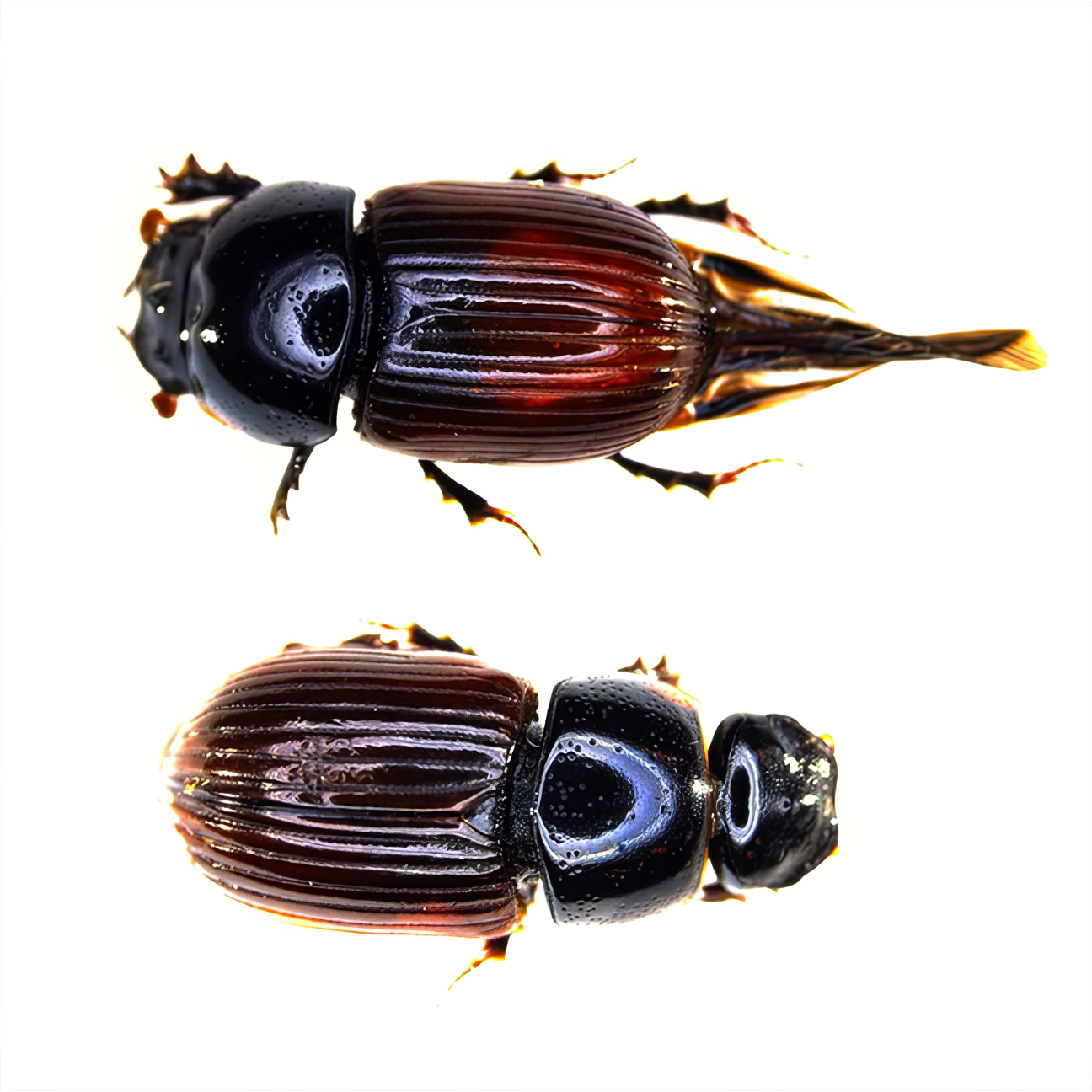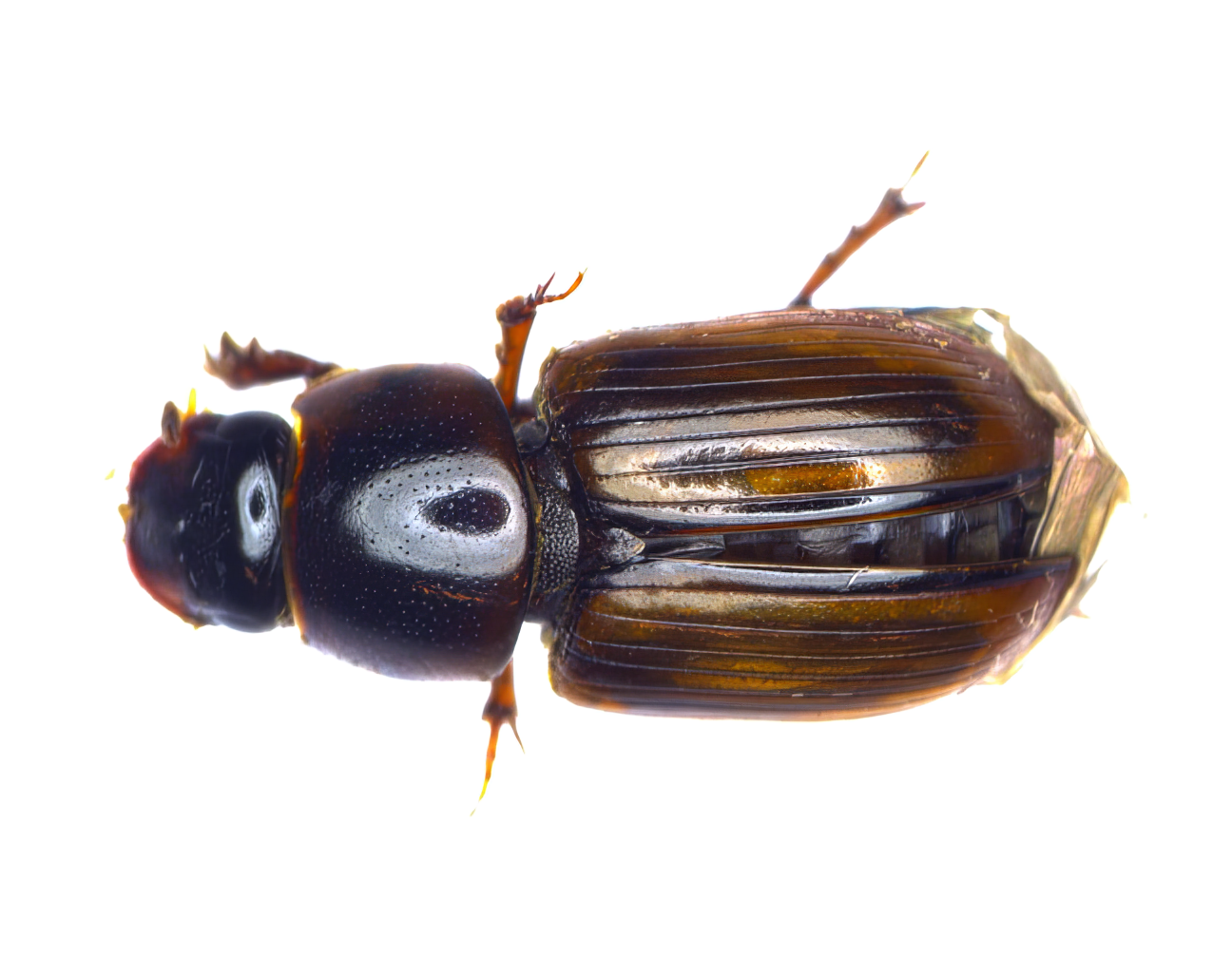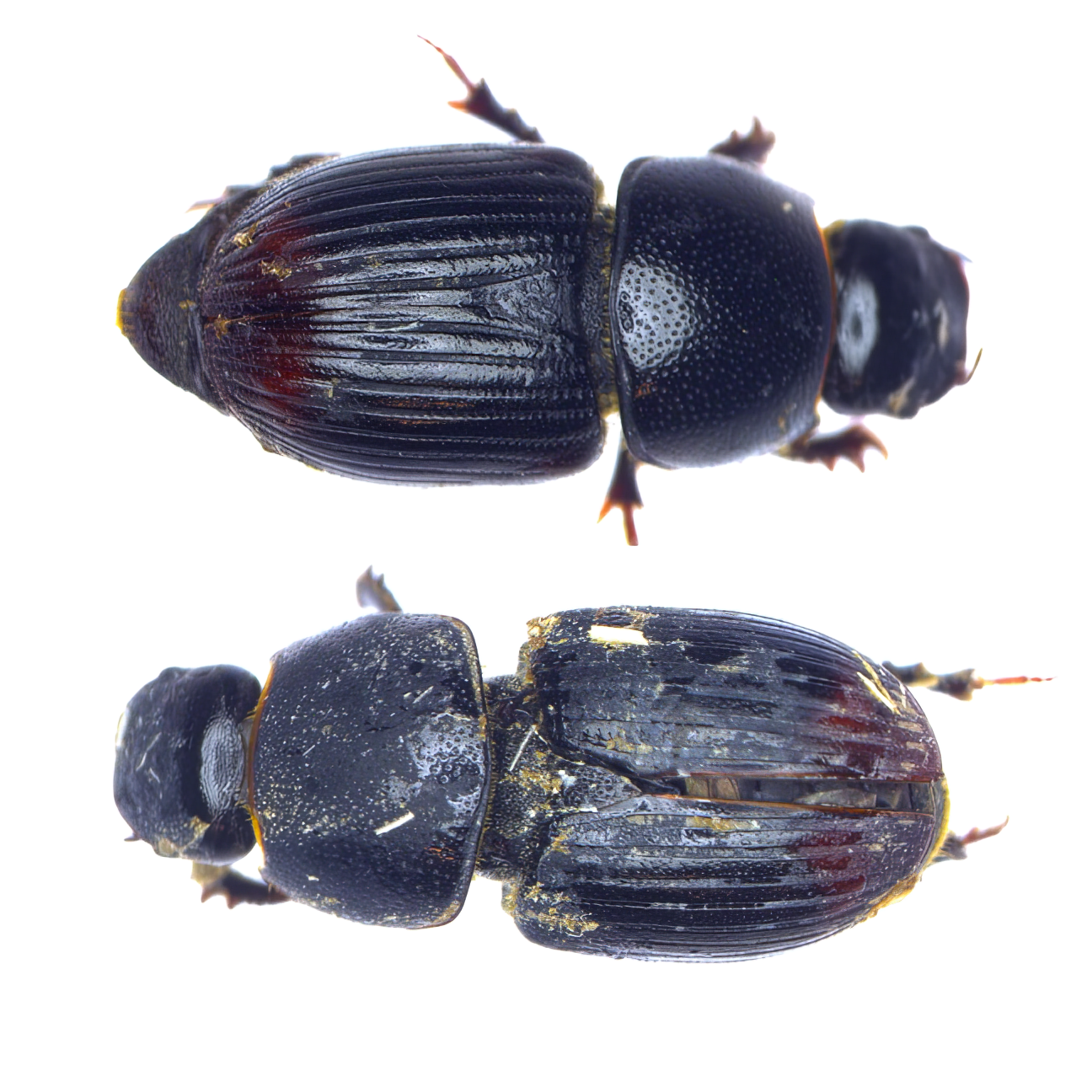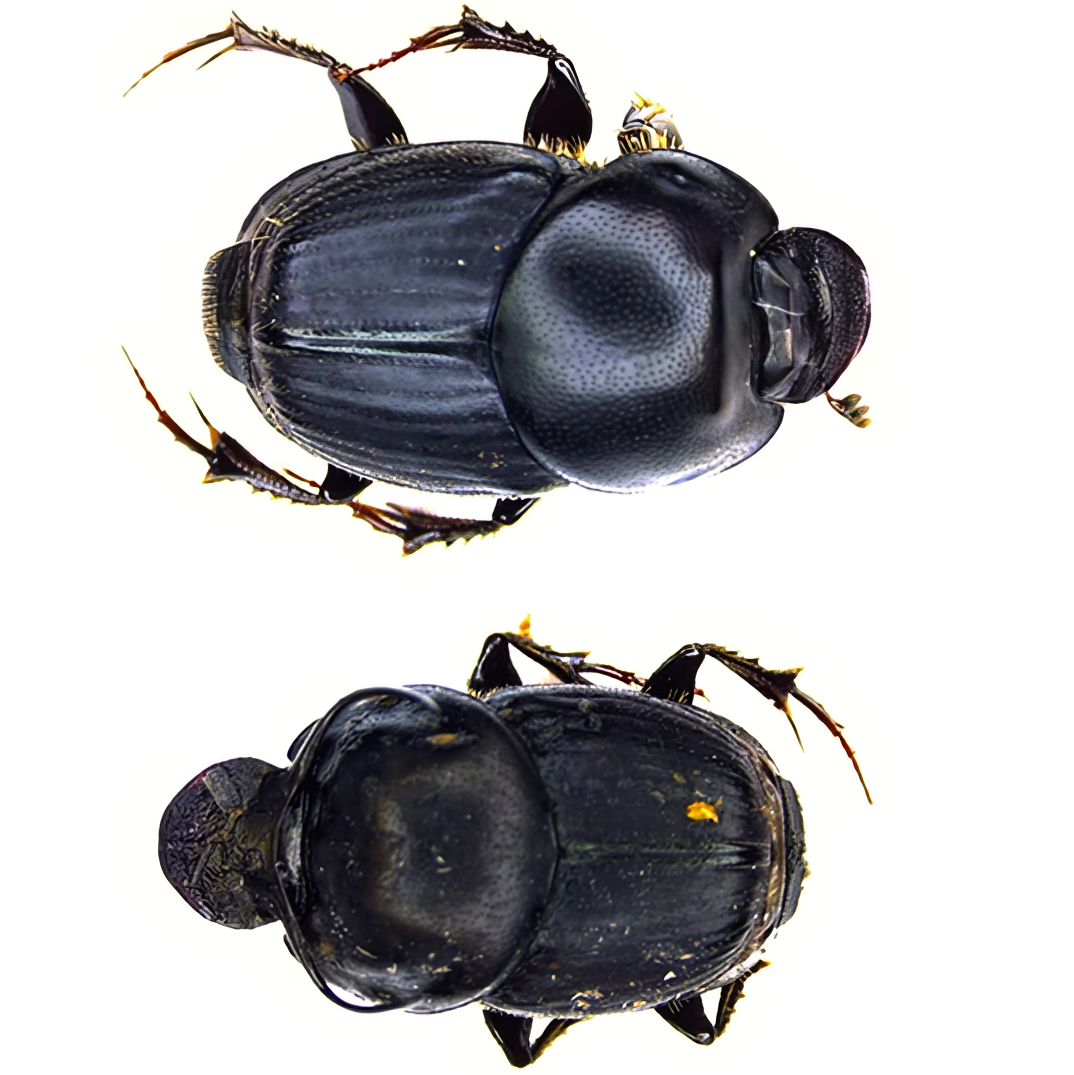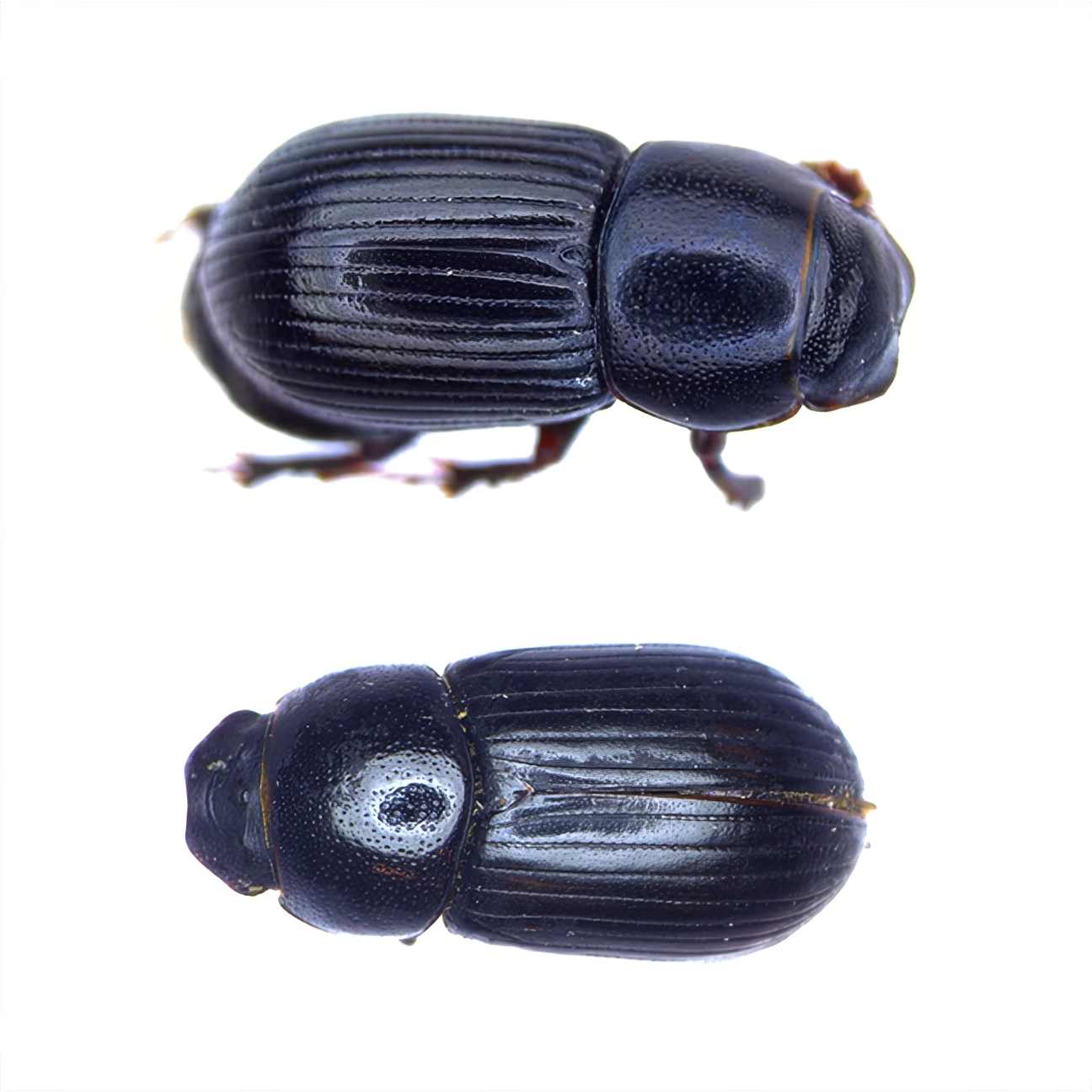We sampled for dung beetles in the spring and summer of 2022 and 2023 across 3 fields at TomKat Ranch:
Dung Beetle Populations at TomKat Ranch 2022 & 2023
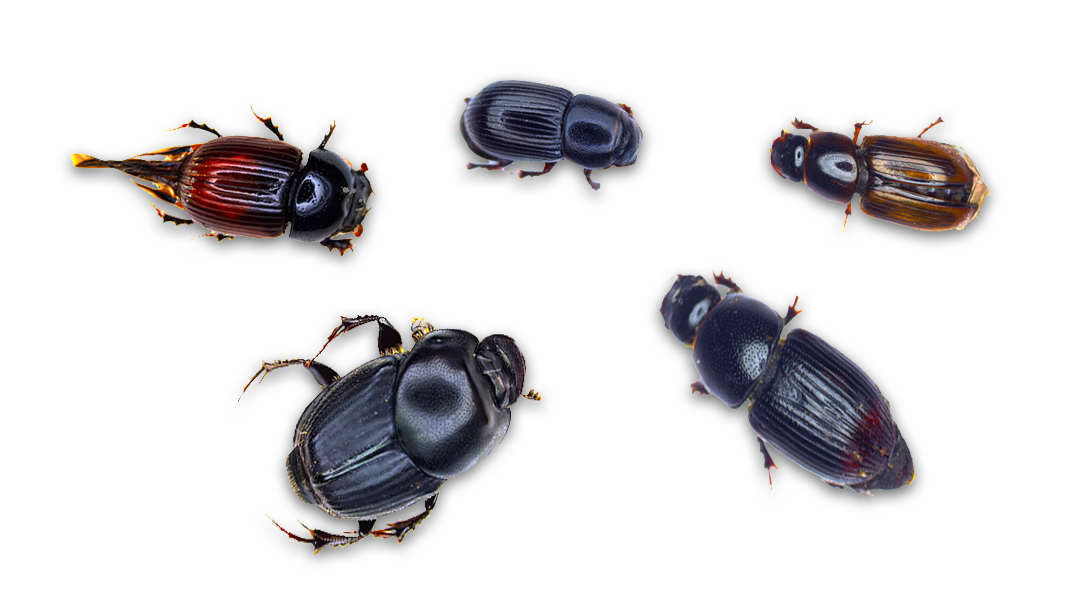
04/24/2024
Report Authors:
Wolfe Eichinger, undergraduate UCSC 2024
Suzanne Lipton (suzannelipton@ucsc.edu), Ph.D. candidate Environmental Studies, UCSC
Introduction:
We sampled for dung beetles in the spring and summer of 2022 and 2023 across 3 fields at TomKat Ranch: Water Tank, Front Field, and La Milpa. Below is a brief description of the beetles found and their abundances across fields, as well as an analysis of the species richness and Shannon diversity. We found five species in 2022 and three in 2023.
Methods:
We had 6 baited traps per field and left each trap for approximately 48 hours after placement until collection. We sampled fields twice per season in the spring and summer. The calculations reported by field below are based on the sum of all dung beetles across all traps by field/sample time. These data do not include samples collected from the sheep or pitfall traps also set in 2022 or 2023 for comparisons.
Beetles found at TomKat Ranch:
We found the below 5 species at TomKat Ranch.
Aphodius fimetarius
A. fimetarius is a scarab beetle native to Europe, but found commonly across North America as well as many other parts of the world. They are a dwelling dung beetle species, meaning they burrow into cow pats and leave brood balls in small chambers where their young will hatch (Christensen & Dobson, 1977). Adults are usually 5-10mm in length, and can be identified by their black pronotum and head and signature dark red elytra (Gordon & Skelley, 2007). They play an important role in maintaining healthy levels of soil nutrients by recycling dung, and they help control fly populations too.
Labarrus cincticulus
L. cincticulus is a scarab beetle native to South America, but found worldwide. A dwelling scarab species, they lay small numbers of eggs inside pats from a wide variety of animals. They compete directly with some species of flies for manure resources, making them important agents in pest management. Adults are strongly attracted to light, making them an easy catch for beetle collectors (Steury & Paulsen, 2022). Adults are 3-6mm in length, identified by brown/yellow markings down the length of their elytra and short spines on all six legs (Gordon & Skelley, 2007).
Otophorus haemorrhoidalis
Native to Europe and northern Asia but found around the globe, adult O. haemorrhoidalis are dwelling dung beetles, active from the spring to the fall and lay single eggs inside pats. They lay eggs multiple times per year, and feed on dung from different animal species (Wassmer, 2014). Adults are about 3-7mm in length and can be identified easily by their splotchy brown-red elytra, dark brown pronotum, and elongated scutellum (Gordon & Skelley, 2007).
Onthophagus taurus
This tunneling dung beetle species, native to Europe but found on almost every continent, is a dung generalist. Similar to O. haemorrhoidalis, individuals of the species O. taurus will feed on any dung they find (Wassmer, 2014). Adults range from 5-12mm long, and individuals of this species can be seen with their wide black pronotum and relatively short, dark brown elytra (Gordon & Skelley, 2007). Males of this species, often identifiable by the presence of large horns on their heads, engage in strength competitions for control over the brood tunnels that females dig (Moczek & Emlen, 2000). Some females have been documented practicing brood parasitism (Moczek & Cochrane, 2006). They are said to be the strongest animal on earth, capable of lifting 1,140 times their body weight (Knell & Simmons, 2010).
Planolinoides pectoralis
P. pectoralis is another dung beetle member of the scarab family. Native to Europe but found all across North America, these beetles tend to prefer the dung of small mammals such as ground squirrels and pack rats (Gordon & Skelley, 2007). They are most commonly found in lightly forested areas, active from late winter until the early fall (Ritcher, 1966). Adults are generally 3-6mm long and are recognizable by their short, triangular scutellum and rounded, borderless, dark brown pronotum (Gordon & Skelley, 2007).
Overall abundance of dung beetles in 2022 and 2023 across sample times and field:
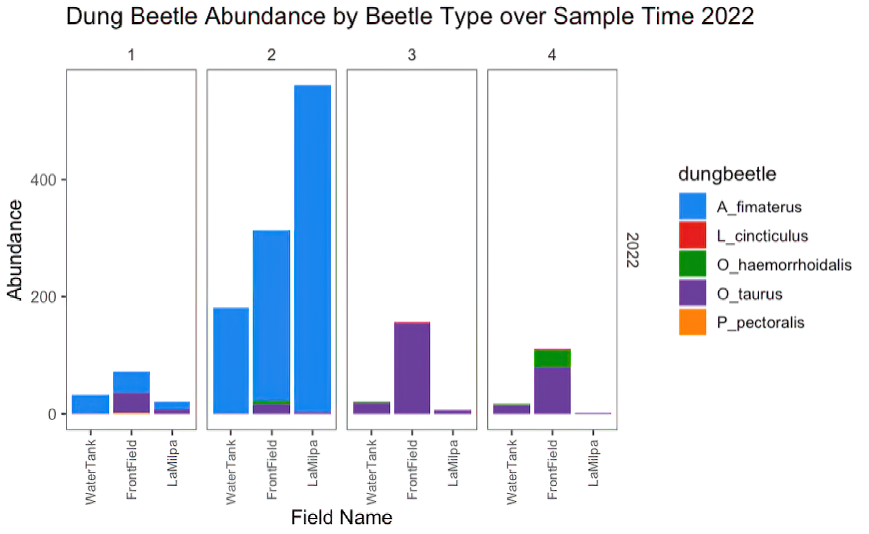
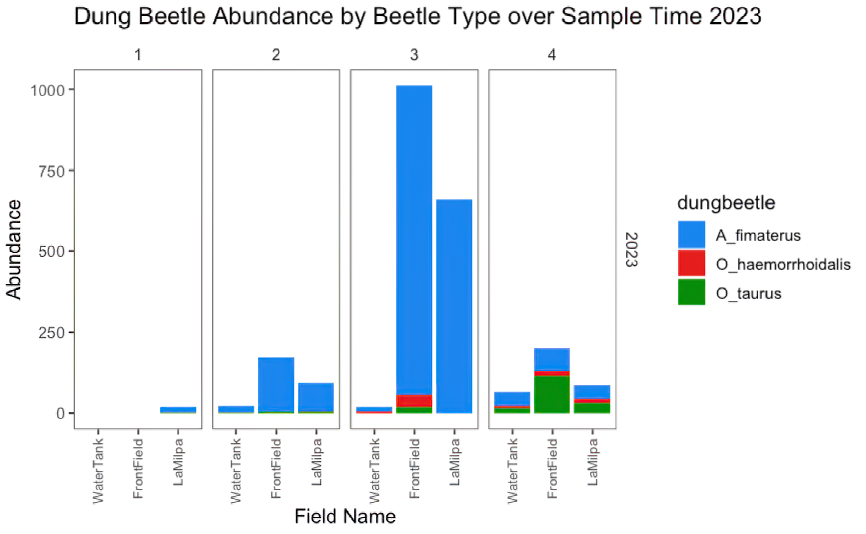
An in depth look at species breakdown by sample time 2022:
a. Sample Time 1: April 8-April 10, 2022
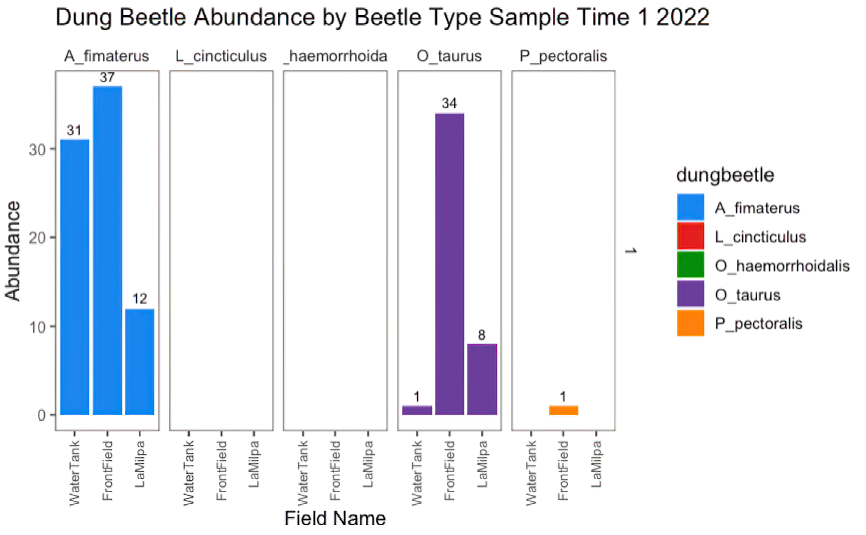
b. Sample Time 2: May 13-May 15, 2022
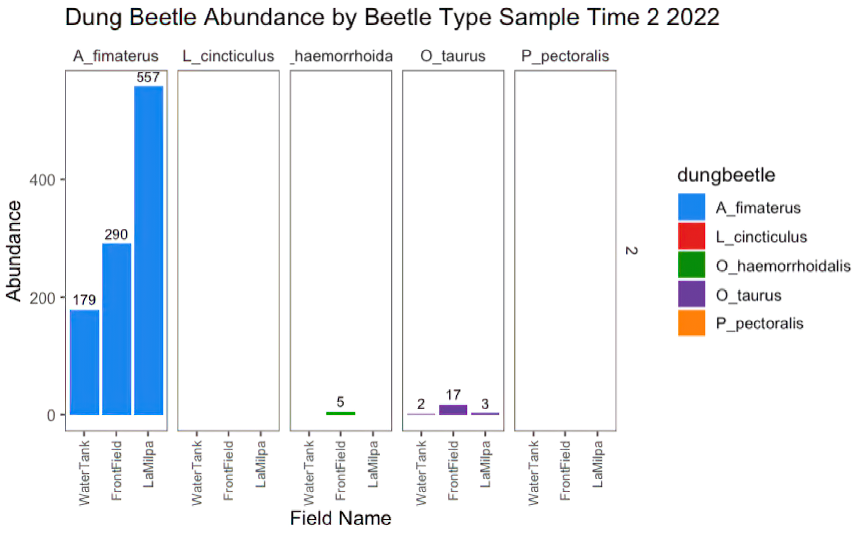
c. Sample Time 3: July 13-July 15, 2022
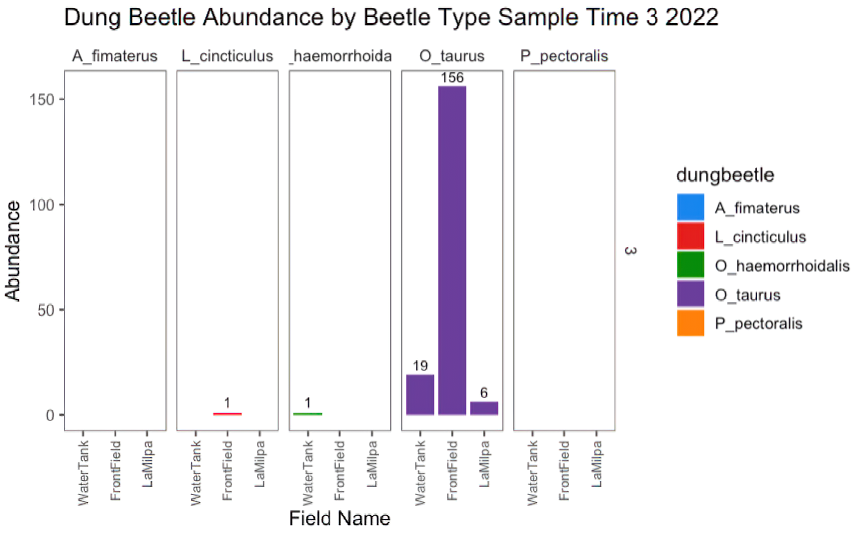
d. Sample Time 4: August 2-August 4, 2022
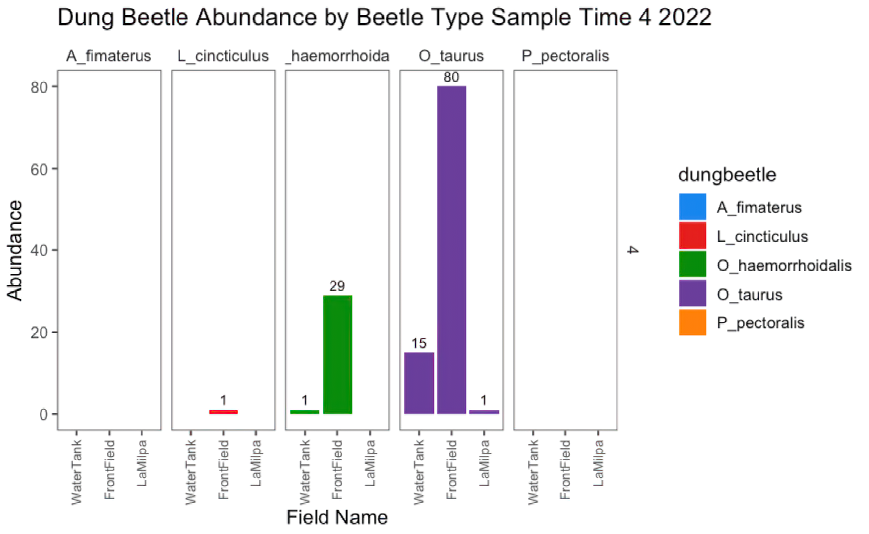
An in depth look at species breakdown by sample time 2023:
a. Sample Time 1: April 17-April 19, 2023
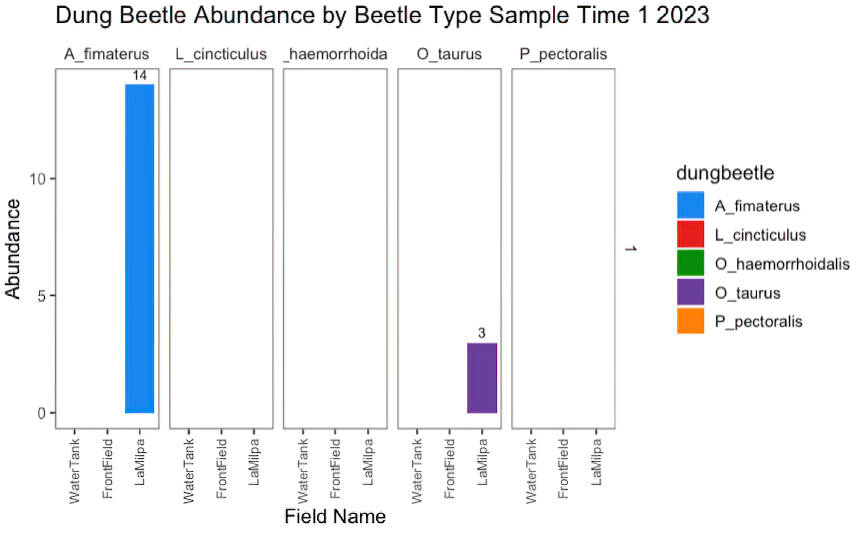
b. Sample Time 2: May 16-May 18, 2023
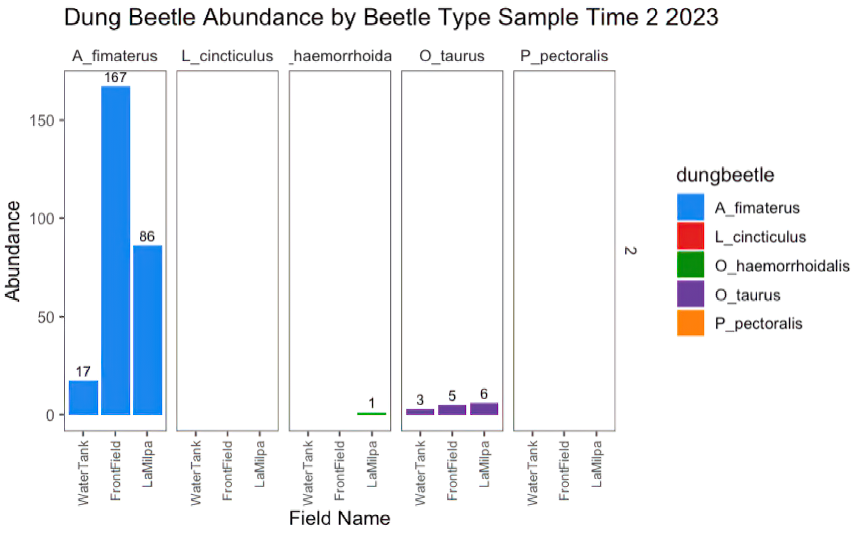
c. Sample Time 3: June 27-June 29, 2023
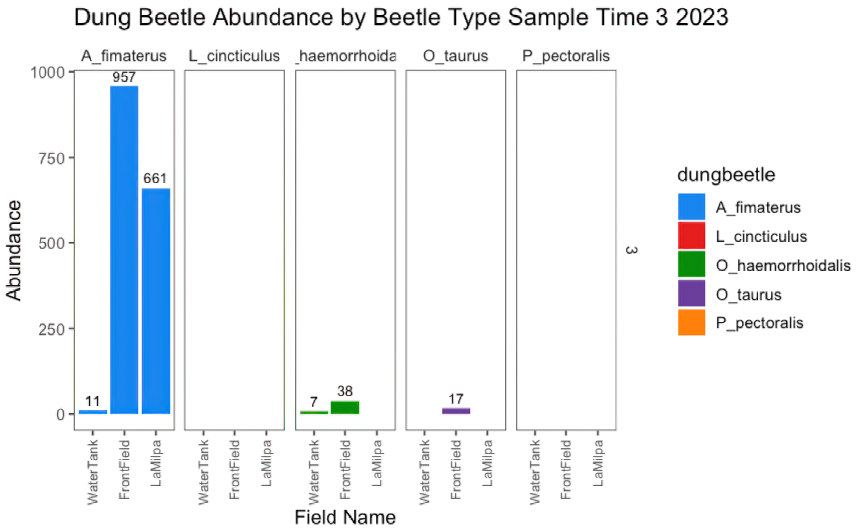
d. Sample Time 4: July 17-July 19, 2023
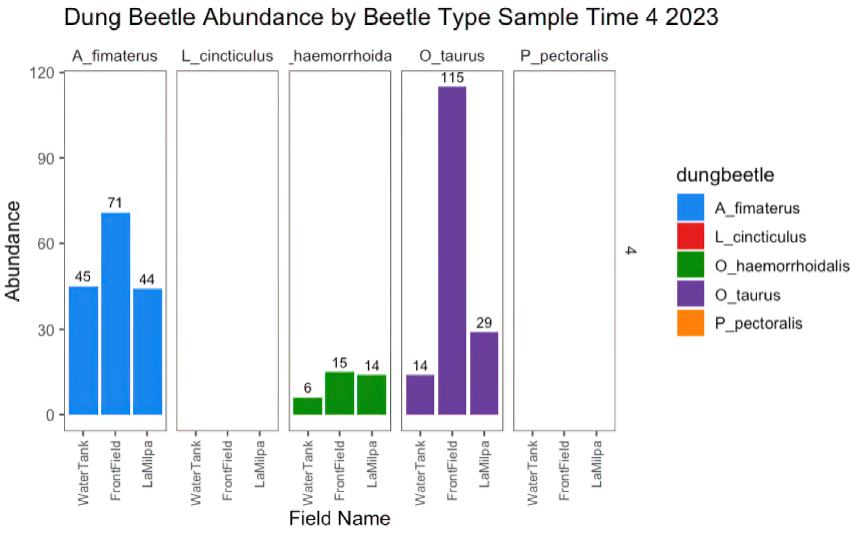
Overall richness by Year and Sample Time:
Richness is the number of different species.
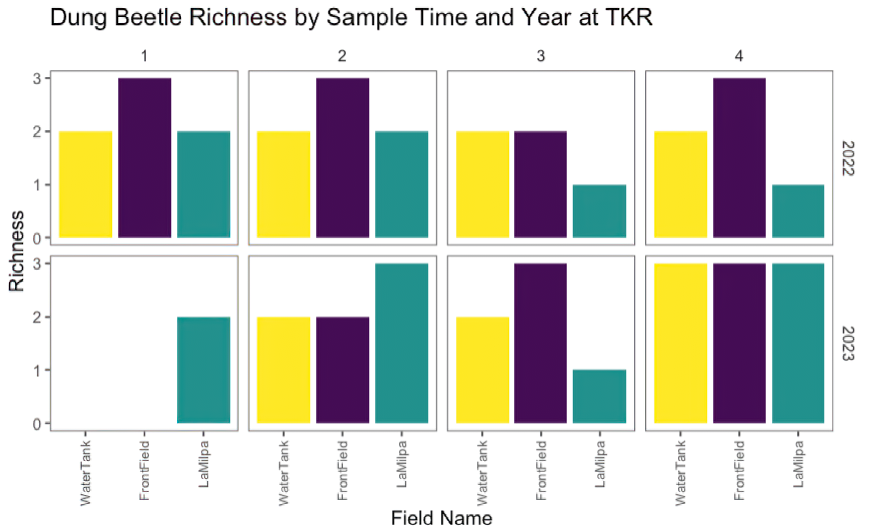
Overall shannon diversity by year and sample time:
Shannon diversity is an abundance weighted assessment of richness.
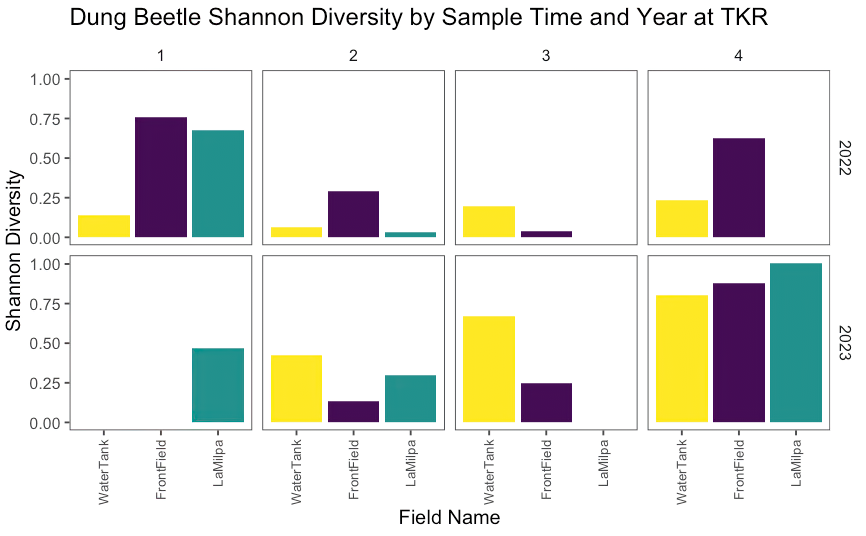
Conclusions:
Our findings show differences in the abundance and diversity by sample time between years, which we believe was driven by differences in temperature and precipitation; 2022 was one of the driest years on record, while 2023 was one of the wettest. Initial models incorporating the surrounding landscape diversity and grazing density and including 5 other ranches in the region (not shown here, but coming soon!) indicate that wetlands in the surrounding area increase beetle diversity and abundance, while more time since grazing decreases beetle diversity.
References:
Christensen, C. M., & Dobson, R. C.,
“Biological Studies of Aphodius Fimetarius (L.) (Coleoptera: Scarabaeidae).” Journal of the Kansas Entomological Society, vol. 50, no.1, 1977, pp. 129–34. JSTOR, http://www.jstor.org/stable/25082907. Accessed 20 Apr. 2024.
Gordon, R.D. & Skelley P. (2007).
A monograph of the Aphodiini inhabiting the United States and Canada (Coleoptera: Scarabaeidae: Aphodiinae). Memoirs of the American
Entomological Institute. 79. 1-580.
Knell, R. J., & Simmons, L. W., (2010, March 24).
Mating tactics determine patterns of condition dependence in a dimorphic horned beetle. Proceedings of the Royal Society B: Biological Sciences, 277(1692), 2347–2353. https://doi.org/10.1098/rspb.2010.025
Ritcher, P.O. 1966.
White grubs and their allies: A study of North American scarabaeoid larvae. Oregon State University Press, Corvallis, Oregon. Studies in Entomology
Moczek, A. P., & Cochrane, J. (2006),
Intraspecific female brood parasitism in the dung beetle Onthophagus taurus. Ecological Entomology, 31: 316-321.
Moczek, A. P., & Emlen, D. J.,
Male horn dimorphism in the scarab beetle, Onthophagus taurus: do alternative reproductive tactics favour alternative phenotypes?, Animal Behaviour, Volume 59, Issue 2, 2000.
Steury, B. W., & Paulsen, M. J.,
“The Scarabaeoidea (Coleoptera) of the George Washington Memorial Parkway, Virginia, USA.” The Maryland Entomologist 8.2 (2022): 58-79.
Wassmer, T.
“Seasonal Occurrence (Phenology) of Coprophilous Beetles (Coleoptera: Scarabaeidae and Hydrophilidae) from Cattle and Sheep Farms in Southeastern Michigan, USA,” The Coleopterists Bulletin, 68(3), 603-618, (1 September 2014).
